#super deep with lore with it
Explore tagged Tumblr posts
Note
ok, I want to ask some questions about your OCS. for now, I'll do one for each oc. then one general question.
1: Krampus! he's pretty intimidating, but in that cool way that you would expect from someone holding an old lamp to light up their line of sight in the stealth section of a non-stealth game. my question is "is it THE Krampus, the one who takes care of the naughty list as Santa does the nice list?"
2:I just noticed that the witch and krampus are related. that's very interesting. also, they are so pretty. I love how they almost look like a cat with their hat and belt tail! my question is "does The Witch have a name other than her title?"
3: Clavel's design is wonderful! just what you'd expect with a skeleton gravedigger, and I love it! my question is "how did he become a skeleton?"
4:API!!!! they are soooooo cute! very adorable! my question is: "what is different between human autism and Api's species's autism? what is the same?" (I also kinda want to figure out how their kind works on a biological level, but that's just my inner biologist speaking)
Ohhh thats a really cool way to describe him! also Yes! he is THE Krampus, but i am taking some (a lot actually) liberties with his character tho!
Kinda?? i have a few in mind but i haven't chosen one of them yet, that being said im not sure if its something i would like, use anyways? i quite like the idea of just her title being known and thats it, but i will make sure to have one ready if i ever do plan to use it.
Thank you! He has always been a skeleton ever since he began existing! this is not a common thing in the world my Ocs are from tho, skeletons are usually humans after dying, this is not the case with clavel. i will try to explain soon why with a lil mini-comic since its not a big secret or anything like that (and its low-key something important to the character too).
I think it would work the exact same as humans! (Also for a little biology thing, i think their kind grows in a similar way to how the splatoon inklings do! from a little alien larvae bug thing to a more humanoid alien bug with legs and arms, the inbetween of those two stages looking like fucked up critters, because i think its funny❤️)

Thank you sm for the questions! it was really fun to answer them :]
#ask#ocs#oc#sorry for the late reply!#also i hope my answers are okay! im not really good at writting anything and my oc world is mostly for funsies so i dont really go like#super deep with lore with it#at least for now!
9 notes
·
View notes
Text
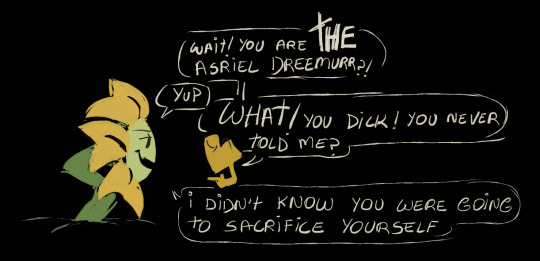
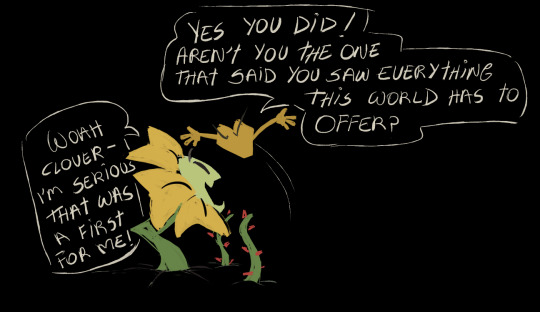
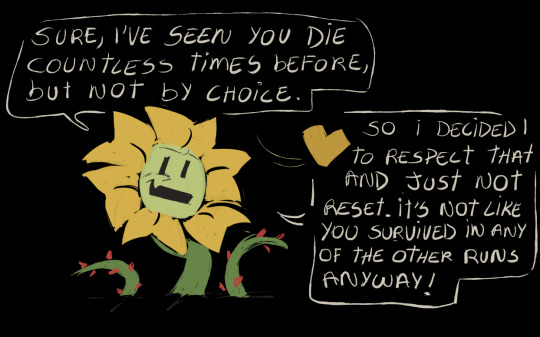
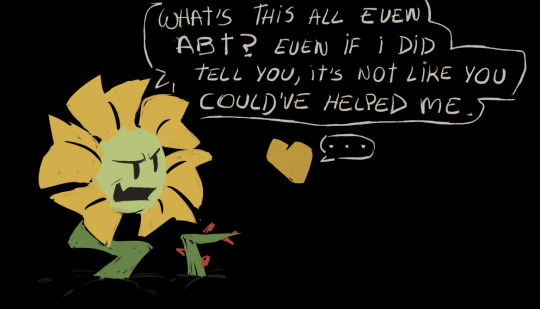


#my art#undertale#undertale yellow#undertale fanart#idk what is the point of this comic#ig i just wanted to see them interacting#i was going to end on some deep shit like#“well ig despite it all we were somewhat friends” but did not knew what the conclusion to that would be so i just ended with a funny#the context for this is after the asriel dreemurr fight#where they find out abt the whole lore of flowey#and clover is just super perplexed that they were interacting with a royal LOl
6K notes
·
View notes
Text
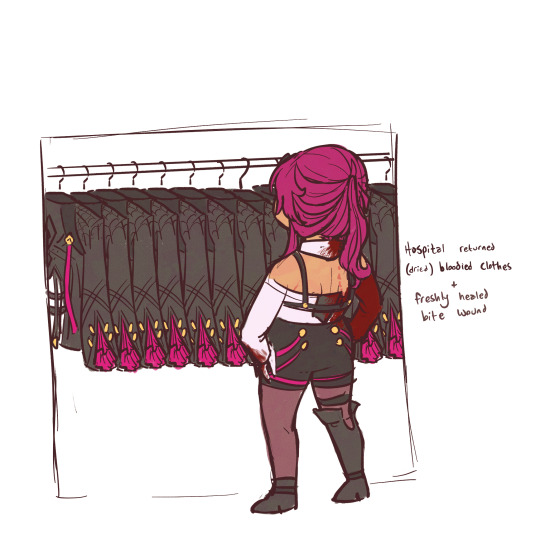
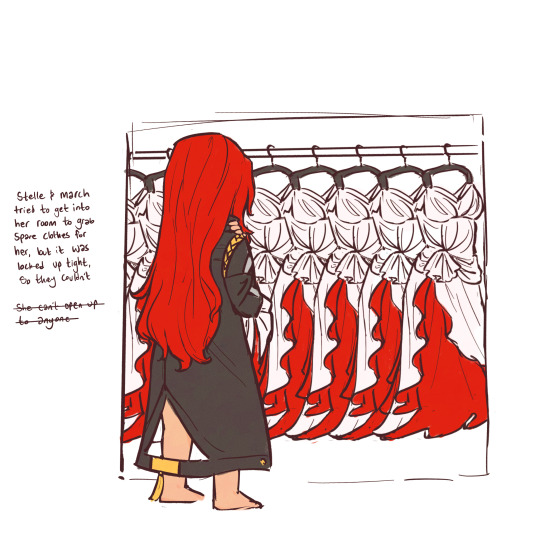
My favorite visual gag in cartoons is "closet full of the exact same outfit".
#my art#honkai star rail#hsr himeko#hsr kafka#werewolf au#personal hc that the gold bits on Himeko's dress are separate pieces of ornamentation#Like her hair decorations#Anyways I thought I'd share that little tidbit about himeko's room :)#it made me sad when i thought about it so I will inflict it upon you as well#I also think that Kafka has a bunch of different jackets because she likes collecting them but#I could see her having multiples of the same jacket she likes because she goes on such dangerous missions#they probably get destroyed#despite her best efforts#you guys get the super secret deep lore in the tumblr tags
187 notes
·
View notes
Text
jayce and viktor getting to know each other during the time skip chronicles

#jayvik#jayce talis#viktor#viktor arcane#arcane#arcane text post meme#jayce x viktor#jayce#jayce arcane#jayce being unaware that he's gay is so fucking funny to me im sorry#also i feel like he'd be the type of person to start telling Viktor super vulnerable shit like...a week into knowing him#i mean viktor met him during his attempt and first saw him during his trial i think we can skip straight to the deep lore confessions
117 notes
·
View notes
Text
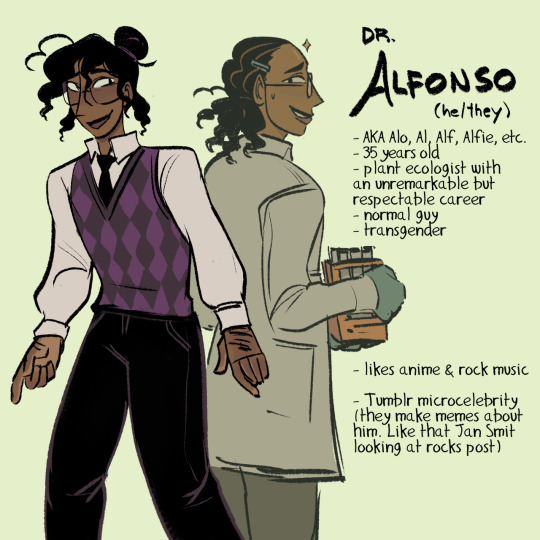



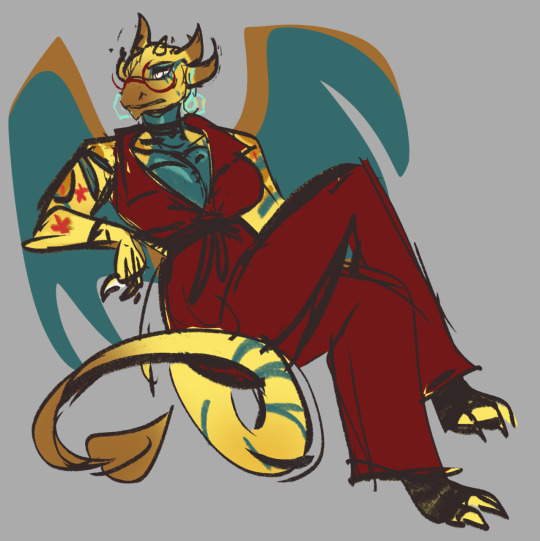

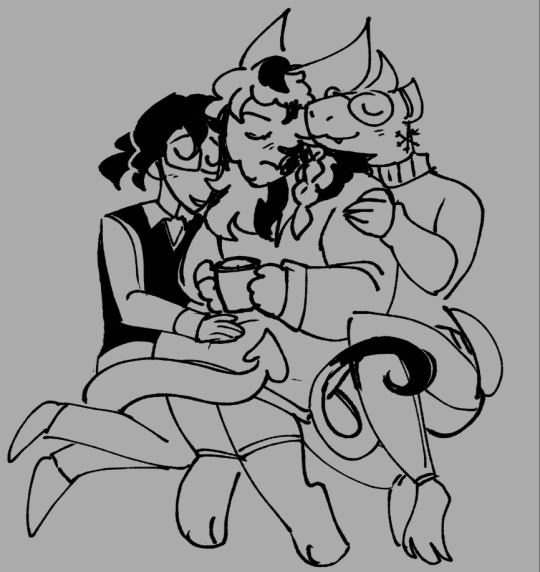
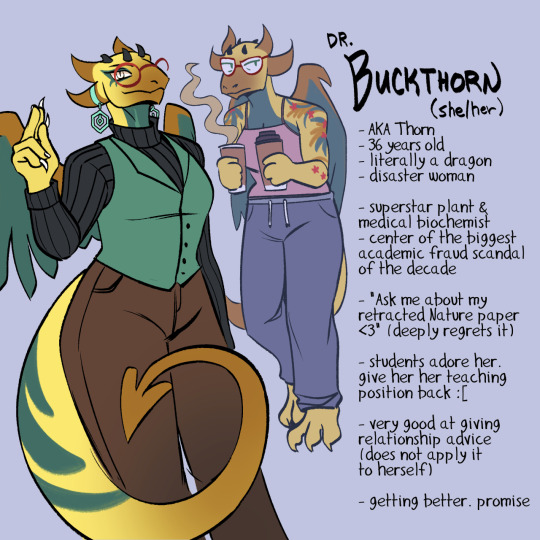
OC dump :]
some funny new bisexuals me and my bestie made recently so we could stick them into a dramatic polycule
(most of the drama is because of a certain big lizard. but they all love each other very much regardless)

#oc#anthro#furry#scalie#dec 2024#jan 2025#feb 2025#2024#2025#technically thorn is also my dragon on FR but i'm not tagging that LMAO#their lore isn't super deep because they were made for pure RP indulgence... but feel free to ask about them...#if these three feel yhk adjacent well. it's because i trojan horse'd them into these three while me and the bestie were brainstorming <3
70 notes
·
View notes
Text
The MH/EAH Deep Dive Formula
Only talk about webisodes, specials, and dolls.
Don't talk about any lore
Wildly speculate on why the reboot happened
Don't acknowledge websites, games, or books
Still find the time to talk about descendants or the dolls 'dressing like strippers'
#EVERYTIME#i just want someone who actually knows the lore to do a deep dive#can we talk about eah without bringing up descendants#and vice versa?#can we talk about the websites or games?#and the books#i hate how video essays about them always start with#“i was SUPER into the line as a kid”#like cool#and you can be a fan without knowing every peice of lore#but you were super into the dolline and your doing a deep dive but you're not even talking about anything deeper tahn common knowledge#for fucks sake#it barely qualifies as a retrospective#ever after high#monster high
63 notes
·
View notes
Text
You can take the Emily out of Prague but you can’t take the Prague out of Emily
#OBSESSSSSSED w her cloudward ho character as usual <3#for ppl who don’t know the deep Emily lore she studied abroad in Prague in college and lowkey has been obsessed w Slavic cultures since#also the deep me lore which is that I was getting very very interested in my own Czech heritage and family around the time I started#listening to NADDPOD so her like adoration of Slavic history and culture including Czech was super meaningful to me in such a real way#I’m sure real Czechs have Something To Say about it all but honestly I always love her <3 from her Ylfas to her Fias she gets me#cloudward ho#d20#grays speaks#Emily Axford#<- just such a tag that exists on my blog now LOL
22 notes
·
View notes
Text
Shadow Curse Events Pt. 1
Ketheric, Selûne, Shar, and Aylin

I’ve played through the game a few times at this point and I always find myself struggling to understand the timeline or at least order of events that occurred with the Shadow Curse. I know some things conflict because there was one version of the story in Early Access (the version where Halsin accidentally killed Isobel) and it was heavily altered for the final version of the game, and some things just got *gestures vaguely* waved away, but I keep wanting to make sense of it anyway.
So that’s what this post (edit: I mean series) is going to do. After the cut, obviously. Long deep dive post ahead! Picture of a tired Ketheric for attention and because same bro c':
TLDR: These events happen either in the 1370s or the 1390s. Ketheric loses Melodia (his wife) and Isobel (his daughter) and turns to Shar. He captures Aylin, then builds a Big Dark Justiciar Army, training them and forcing them to kill Aylin over and over. Meanwhile, a Selûnite resistance is brewing in the town, and it's kind of making everything worse. One Selûnite rebel even goes so far as to make a deal with a devil. And all of that is BEFORE the Harpers and druids arrive as an army.
We don’t have dates, unfortunately, aside from knowing that the shadow curse itself was unleashed about a century ago, so “timeline” would be a loose term to use if/when I use it. But I have two theories about when it happened.
One theory is that because the Spellplague was happening between 1385-1395 DR (during which there was neither a true Weave nor a Shadow Weave, which is what the shadow curse is made of), the shadow curse likely started around 1396-1399, just shy of a full 100 years before the game’s events in 1492. But that’s just me conjecturing based on the idea that if the Shadow Weave is gone…how does the shadow curse stick around?
The other theory is that the shadow curse was unleashed sometime between 1371 and 1374. This is because a) Dark Justiciars were still being sent by Ketheric Thorm to destroy Moonhaven (the Blighted Village) in 1371 (Ketheric writes a letter about attacking Moonhave and a journal dated 1371 boasts that Ilyn Toth, the basement apothecary-necromancer dude, got killed by Dark Justiciars) and b) because Khelben Arunsun himself, the literal Blackstaff (super powerful and very old wizard), wrote a letter negotiating surrender on behalf of the Harpers.
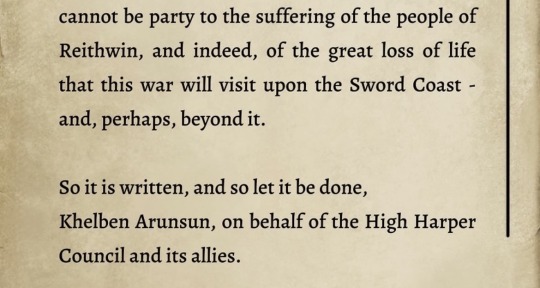
We cannot be party to the suffering of the people of Reithwin, and indeed, of the great loss of life that this war will visit upon the Sword Coast - and, perhaps, beyond it. So it is written, and so let it be done, Khelben Arunsun, on behalf of the High Harper Council and its allies.
Wiki says Khelben broke his alliance with the Harpers in 1370 due to some disagreements, but it’s possible his splinter faction was at the battlefield with the other Harpers. I doubt he was there personally, but who knows. I wouldn’t go any earlier than 1371, though, because Baldur’s Gate II happens in 1369, and Jaheira would have been too busy dealing with those events to deal with Ketheric too. But it can’t be later than 1374, because Khelben Arunsun dies in 1374.
(I have questions about how the shadow curse survived the Spellplague and the loss of the Shadow Weave, but the answer to that could simply be All Magic Was Weird and Unstable at the time…plus Thaniel was already in the Shadowfell by this time, so the land couldn't heal.)
So it’s either 1371-1374 (because of the Khelben timeline, and I guess the Spellplague didn’t affect it) or it’s 1396-1399 (because of the Spellplague, but the writers just forgot Khelben was dead by that point, or maybe his ghost wrote the surrender notice idk). Both are good enough for Halsin and Jaheira to talk about things happening “a century ago,” but you can see why I’m avoiding dates.
But let’s push it back a few more decades. Back when Ketheric was a Selûnite and Isobel a very small child.
As we’re probably all well aware, during this time, Ketheric worships Selûne along with his wife, Melodia. At some point, he even commissions the local Mason’s Guild to build Moonrise as a testament to Selûne herself, according to Morfred the mason (who you can talk to in House of Hope, it’s pretty cool). Ketheric and Melodia have Isobel, but then Melodia dies while Isobel is still pretty young. Ketheric remains a Selûnite, mostly for Isobel’s sake, until she dies too.

Ketheric: I’ll tell you a story, True Soul. About a man who sold himself piece by piece. He had…everything. A wonderful wife. A brilliant daughter. They lived not far from here. His wife died too young. Grief tore through their home like a thief, snatching away the scent of her hair, the rustle of her skirts. But the man did not break. He could not break. His daughter needed him whole, after all. She grew up—grew strong. Challenged him. Filled his heart with such joy it supplanted all sorrow. When she was killed, the man…he tried to remain whole, but it wasn’t possible. Do you understand? Player: So the man fell to pieces. Ketheric: The pain was unbearable. All-consuming. He decided he’d do anything for reprieve. First, he sold himself to the goddess of loss. But the pain did not subside, no matter his obscene feats of devotion. Then a new god came—a god who promised the man something wonderful: his daughter. Her life returned. Imagine it. He would have to give everything: his body and soul entire. He did not hesitate. Not for a moment.
We know this story. Ketheric turns to Shar and everything goes Very, Very Badly. But the exact details/order of Ketheric's Sharran days are a little hazy. So here's what I've been able to piece together to sate my own curiosity.
While Ketheric is still a faithful (but waning) Selûnite, Dame Aylin visits as an emissary of Selûne. Moonrise/Reithwin is a Selûnite refuge and the Thorms are allegedly devout favorites of the moon goddess, so it's a big deal. While she's there, she and Isobel fall in love. Ketheric disapproves, in part because Aylin is immortal and Isobel is not (Isobel and Aylin both say this in dialogue).
Plus, and this is a personal opinion, I think Ketheric might have seen Aylin's interest in Isobel as another thing Selûne was trying to take from him. It isn't enough that Selûne let Melodia die, now her daughter is trying to woo his daughter and take her too.
But then Isobel dies. Somehow. The launch version of the game isn’t clear how. Aylin mourns but Ketheric spirals. He turns to Shar, hoping she will force him to forget about Isobel, but he doesn't. Nevertheless, he becomes a zealous Sharran.
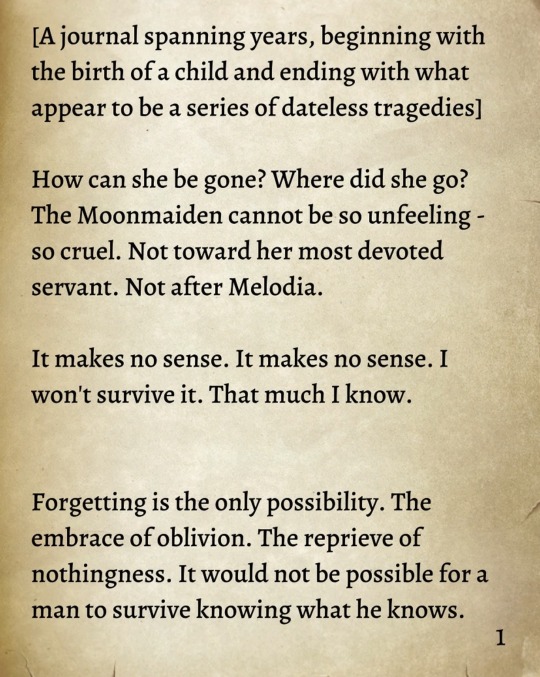

[A journal spanning years, beginning with the birth of a child and ending with what appears to be a series of dateless tragedies.] How can she be gone? Where did she go? The Moonmaiden cannot be so unfeeling - so cruel. Not toward her most devoted servant. Not after Melodia. It makes no sense. It makes no sense. I won't survive it. That much I know. Forgetting is the only possibility. The embrace of oblivion. The reprieve of nothingness. It would not be possible for a man to survive knowing what he knows. Knowing what can be lost. Shar understands that. Hers is the only mercy I can comprehend. My mind is full of holes - yet not enough. The emptiness. The time. The nothingness. And still I remember. Still I remember it all. There is no mercy in this beating heart. There is no mercy in life at all.
He builds the Gauntlet of Shar (or maybe renovates and Shar-ifies it, maybe it was already there) beneath the Thorm mausoleum, connecting it to the much more ancient Grymforge area. Grymforge becomes a kind of base or stronghold for the Justiciar army while the Gauntlet is designed to test their mettle and prepare them for the task that will make them official Dark Justiciars—killing Aylin, though it's not clear when Ketheric and Balthazar lure her into the Shadowfell.
I'll get back to that later.
We know that Grymforge was used as a Dark Justiciar stronghold and possible training ground because of all the Sharran stuff we find there. It's like super obvious. The feasthall room, the dormitories, the weapons that lay everywhere. There's basically a whole Sharran city in the Underdark beneath and near Reithwin, some of which we can see from various points in Grymforge. In fact, if you go through the poisoned room where Nere is, you can see the Gauntlet down below.
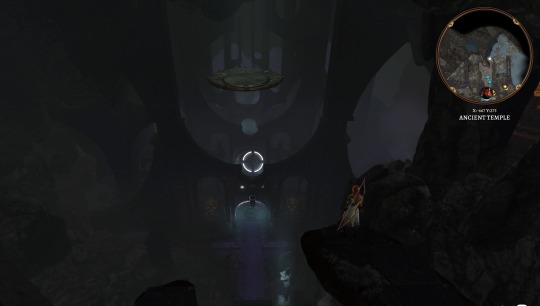

(It's a little hard to see here 'cause I play on console but there's a glimpse of the giant Shar statue that takes up a ton of space in the Gauntlet. Somehow, the two places used to connect.)
Ketheric's new Sharran teachings are ruthless and vicious. He encourages his Dark Justiciars to kill a Selûnite once a tenday or more as part of their training and service to the Lady of Loss.

The Law of Nightfall: From the moon falls the foulest of lights. iIt peeks through cracks and fissures, illuminating the most remote recesses of the Underdark. Light bestows hope, a pernicious notion which must be extinguished. At the darkest hour, pray to your Lady and feast in Her honour. The second day after, slay a disciple of Selûne. If none may be found, a Lathanderian or Mystran are an acceptable offering. Do this once a tenday, and the Lady of Loss shall know you.
Reithwin and the surrounding village soon become a hunting ground. Most people convert. Those who don't get hung in the square as examples (according to a shadow memory). All faithful Selûnites are forced to practice their devotion to the Moonmaiden in secret, led by Morfred the mason and his brother Halfred the innkeeper of Last Light Inn. Halfred hides Selûnite relics beneath Last Light (you can still find them) while Morfred plots a true resistance.

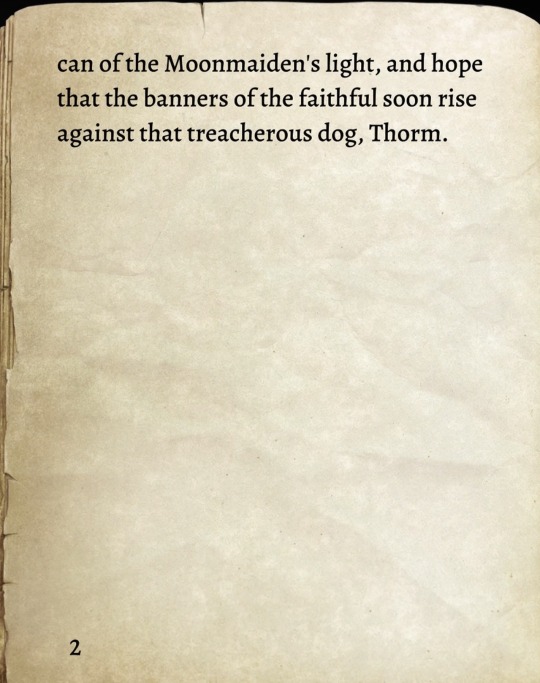
[Hidden amidst columns detailing the income and expenditure of a tavern is an aside, written in tiny, urgent handwriting.] I have concealed the sacred relics of our revered goddess in the darkest corner of this place. Morfred, my loyal brother, seeks to forge a network of allies to stand against the oppressive reign of Ketheric Thorm. Sadly, fear has gripped the hearts of many, turning them away from our cause. I cannot truly blame them, for trepidation fills my soul as well - but I must put aside my own fears and reunite with Morfred in the bowels of the Mason's Guild. Together, we shall preserve what we can of the Moonmaiden's light, and hope that the banners of the faithful soon rise against that treacherous dog, Thorm.
But as time goes on, Morfred grows increasingly distressed with the events happening in Reithwin and the ease with which people are eager to switch faiths.
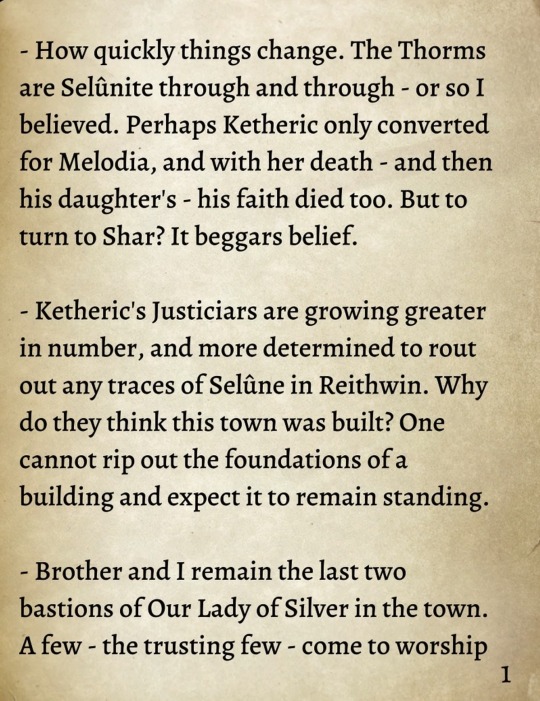
- How quickly things change. The Thorms are Selûnite through and through - or so I believed. Perhaps Ketheric only converted for Melodia, and with her death - and then his daughter's - his faith died too. But to turn to Shar? It beggars belief. - Ketheric's Justiciars are growing greater in number, and more determined to rout out any traces of Selûne in Reithwin. Why do they think this town was built? One cannot rip out the foundations of a building and expect it to remain standing. - Brother and I remain the last two bastions of Our Lady of Silver in the town. A few - the trusting few - come to worship in secret by moonlit nights. Others - converts, all. Whether they truly believe, I cannot say. Impossible, isn't it?
(Don't worry, the second page is further down lol spoilers!)
Life is not going well in Reithwin, even if you're not a Selûnite. Ketheric is determined to destroy all traces of Selûne and treason of any kind. His Dark Justiciars begin tormenting citizens to reveal pockets of Selûnite resistance. He also suffers no treasonous word against him, even if the citizens in question aren't Selûnite. We see a glimpse of this and of the Justiciars' cruel influence during the questline with He Who Was and Madeline, who ratted out her friends' innocent(?) complaints about Ketheric to some Justiciars, resulting in their brutal deaths.
Eventually Morfred realizes that the Dark Justiciars are too powerful to resist and turns to Raphael, offering his soul in exchange for something to destroy the Dark Justiciar army.
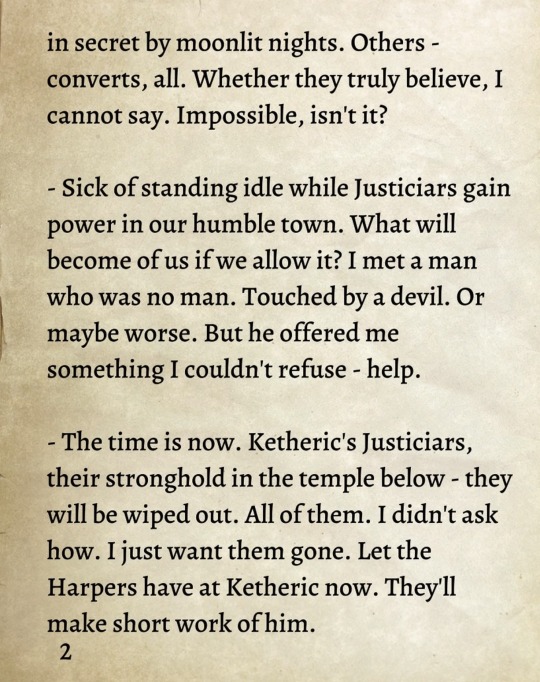
- Sick of standing idle while Justiciars gain power in our humble town. What will become of us if we allow it? I met a man who was no man. Touched by a devil. Or maybe worse. But he offered me something I couldn't refuse - help. - The time is now. Ketheric's Justiciars, their stronghold in the temple below - they will be wiped out. All of them. I didn't ask how. I just want them gone. Let the Harpers have at Ketheric now. They'll make short work of him.
You can ask Morfred about this in the House of Hope, actually, where he confirms the details. I mean, he's in Raphael's house, so it's pretty obvious the he did, in fact, make a deal with him.
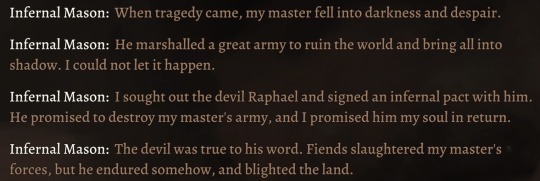
Infernal Mason: When tragedy came, my master fell into darkness and despair. He marshalled a great army to ruin the world and bring all into shadow. I could not let it happen. I sought out the devil Raphael and signed an infernal pact with him. He promised to destroy my master’s army, and I promised him my soul in return. The devil was true to his word. Fiends slaughtered my master’s forces, but he endured somehow, and blighted the land.
The Fiend in question here is Yurgir, who ends up crashing through Grymforge and the Gauntlet to kill all Dark Justiciars in his path. (He misses one, because Raphael is a sneaky bastard who let one get away by turning him into a swarm of rats, but I digress.) We know Yurgir caused the destruction in Grymforge, too, because of the Merregon masks and hellbeasts we find around the area, and the fact that if you pass all the checks with the Duergar mason examining the stone, he helps you piece together this narrative:

Stonemason Kith: An ancient city, hewn from the stone by the disciples of Shar, later abandoned. Untold centuries later, a new tribe revives it. Fresh walls, fresh sculptures...until a great hellbeast charges through, toppling the walls and crushing the people! Heh - that explains the infernal plate I found. Perhaps you might have use of it.
Further proof that Grymforge and the Gauntlet were once connected...somehow.
Anyway, by the time Yurgir is called in, Morfred's already been found out. Thisobald overhears him drunkenly complaining about Ketheric in the Waning Moon and informs Ketheric of his treachery. Ketheric orders a raid on the mason's guild, leaving Halfred the lone source of Selûnite resistance. It's unknown what becomes of Halfred, but considering the fact that the inn was still taking guests (like Art Cullagh) and housing the Harpers right before the shadow curse descended (there's a shadow memory of a Harper toasting his comrades in Last Light right before the battle with Ketheric long ago), it's likely he's a victim of the curse and not Justiciar brutality.
I’m not sure which is worse, honestly.
It's unclear when Morfred dies, though he admits to witnessing the first part of the shadow curse (i.e., "...but he endured somehow, and blighted the land"). But Morfred's deal coincides in some ways with the arrival of the Harpers and druids. I think he probably makes the deal with Raphael before the Harpers officially march against Ketheric and then gets caught after he hears rumors of the Harpers.
Raphael makes good on his deal around the same the Harpers arrive, perhaps a little afterward. This means Yurgir's slaughter of Justiciars in the Underdark must happen concurrently with the battle happening topside between Ketheric's army and the Harpers/druids, meaning Ketheric is losing his army on two fronts at the same time. Victory seems assured for the Harpers and druids, but of course we know now that Ketheric had a way of cheating death already in place.
He had already imprisoned the Nightsong in a Shadowfell soul cage.
Again, we’re not sure exactly when this happens, but it’s after Isobel dies and before the shadow curse, which unleashes with Ketheric’s supposed death in the battle against the Harpers and druids. However, Aylin herself says that Ketheric and Balthazar lured her into the Shadowfell under the pretense of saving an innocent.

Dame Aylin: He and his loathsome advisor Balthazar lured me into the Shadowfell, claimed they'd found someone in need of my aid. There they trapped me in their infernal cage. I was killed, murdered, made dead, over and over and over by Justiciars of every make and kind. I was reborn, for it is my nature. And Ketheric fed upon my immortality all the while.
This makes me think that Aylin wasn’t aware of Ketheric’s conversion yet, so it must have been very soon after, because otherwise, why would she trust a known Sharran telling her to enter the Shadowfell, the realm that is entirely under Shar’s control? I also suspect Ketheric built (or renovated) the Gauntlet around Aylin after her capture, perhaps at the behest of Shar due to their collaboration in making up new Justiciar teachings, or perhaps out of a sick, vengeful desire to see Aylin tormented for daring to love his daughter.
If this is true, then there’s a very real chance that Ketheric was unkillable before he truly started to torment Reithwin town, and well before the Harpers stepped in to take him down.
Anyway we at least know that Ketheric trapped Aylin in the Shadowfell before the big battle against the Harpers because a) both Isobel and Aylin talk about her being there for a century and b) because Ketheric is already using her invulnerability to survive assassination attempts on his life prior to or during the actual battle against him and his army:
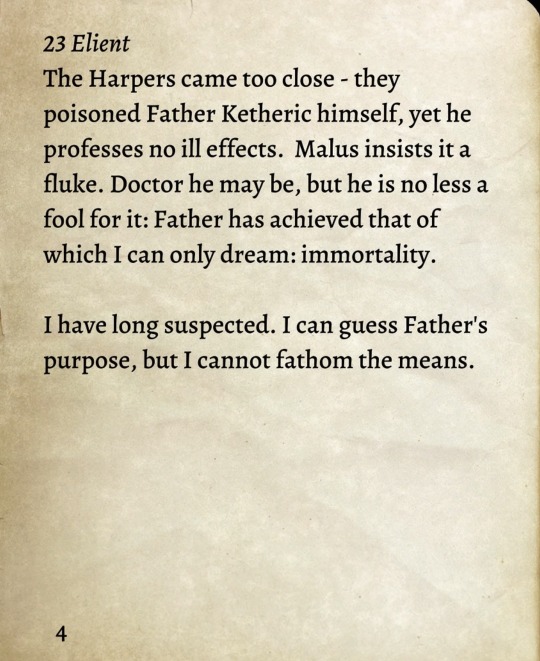
23 Elient The Harpers came too close - they poisoned Father Ketheric himself, yet he professes no ill effects. Malus insists it a fluke. Doctor he may be, but he is no less a fool for it: Father has achieved that of which I can only dream: immortality. I have long suspected. I can guess Father's purpose, but I cannot fathom the means.
This brings us to the eve of the battle itself. But this post is already hella long, so keep an eye out for part 2, all about the Harper and druid battle against Ketheric!
#bg3#bg3 lore#bg3 meta#bg3 discourse#halsin#halsin silverbough#ketheric thorm#jaheira#my thoughts#deep dive#baldur's gate 3#long post#super long post#bg3 critical#bg3 spoilers#bg3 screenshots#who needs sleep when i can just read 24125234 bits of lore#and red string theory my way into madness#also I haven’t mention Halsin and Jaheira much in this post#but they’re coming up soon I promise lol
128 notes
·
View notes
Text
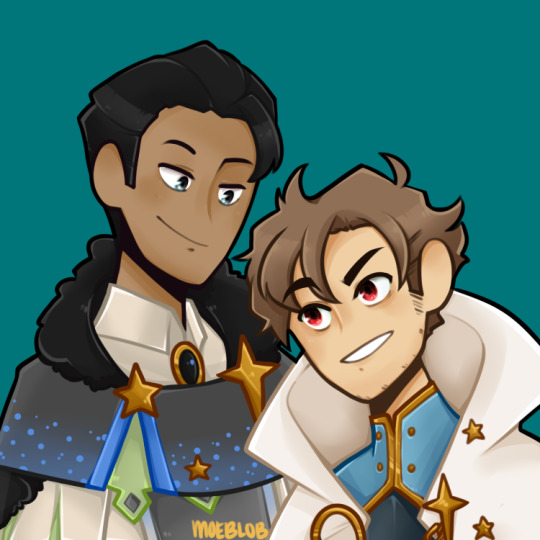
"Still alive in 2025, time to make it everyone else's problem"
#my characters#oops i fell in love#i love my sons and i actually finally shared the Deep Lore of where i based there looks with someone#for the first time and then was like yeah speaking of their design inspiration neither of the guys was my favorite#and if that isnt super telling of who i am as a person ... wrow#also welcoming in the new year with my sons mr depression and mr anxiety woohoo#i hate coloring and im super torn on if this was even worth the time but whatever my hand is cramping fierce now#so im committed to posting and perishing
30 notes
·
View notes
Text
mentally they are still there

physically too.
the waswood has shifted, the gates of the collective dream memory have closed to everyone else. but they haven't returned.

it's been days.
this is the first event in the waswood we have actually participated in! :D and to the ghostie, it's. well. its a (literal) throwback to their first weeks of life. now reisz gets to (literally!1!) look back and trace everything they missed in the event & compare everything they didn't know then but do know now. but also, crucially,
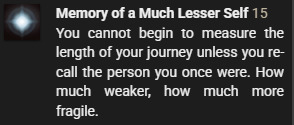
they are being confronted with the fact that this empty-headed beginning might have been the happiest they've ever been and that's...


that's something to reflect on, isn't it?
that's something to think about.
bonus bc also rly liked this version

#i forgor to write the post abt the starved war but i CANNOT not do a step by step revisiting of the event that set up their entire BEING#and right when theyre arguably depressed. this might hit em baaaaad mwahahahah... (rubs hands like an evil fly)#not to mention i was not paying proper attention back then bc i Also knew Nothing about Anything. so. revisiting everything with context...#reisz has gaps on their memory even (me not saving everything on the journal lol)#this is gonna take a long time welp. ill prob just make a list of disjointed thoughts abt it as i go#my procrastinating + wanting to take notes ended up becoming Deep Lore(tm) bc they are just. lingering there in the middle of the estival#actually super fitting for an escapist like them to not leave a dream theyre weak towards. it was about time smth like this happened tbh#fallen london#fl liveblogging#fallen london oc#the twilight phantom
17 notes
·
View notes
Text
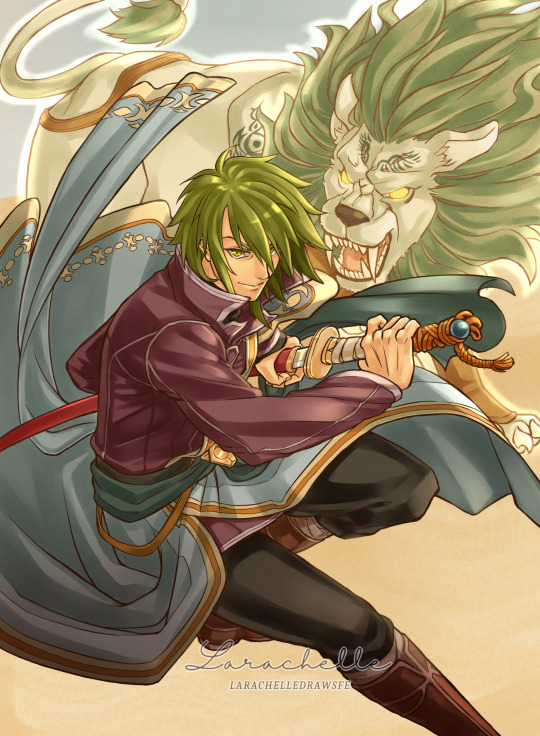
Lion-Blooded!
This is my second piece for the expansion of the awesome fan-made Fire Emblem board game, Anna's Roundtable! If you didn't get a chance to purchase it the first time, pre-orders for the reprint and expansion are available now!
#stefan#fire emblem fanart#fe9#fe10#path of radiance#radiant dawn#tellius#anna's roundtable#ah yes my favorite tellius hobo#Was Stefan an actual recruitable unit in Radiant Dawn or just a fever dream?#yes lets make this super mysterious character with very deep lore implications incredibly difficult to recruit without a guide#i love the tellius games and their baffling gameplay decisions#my art
423 notes
·
View notes
Text
The Temple of Mythal and Greek Sculpture
Or: How Bioware takes from history without any nuance.
--
Picture this. You're me, playing Inquisition for the first time. You get to the Temple of Mythal, the doors shut behind you and you finally get to look around. It's a typical elven ruin for the game, nothing much seems different...
Hold on.
Hold the fuck on.
You know what that is.
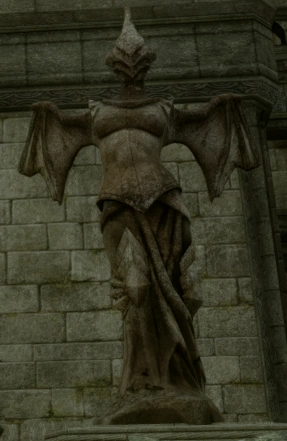
You know what that's based on, and for a long time after it tickles you. Oh, maybe that meant something in the grander scheme of things! We've never seen such a blatant reference to a real-life sculpture anywhere else in game (to my knowledge at the time)! Maybe it'll come up later and it'll all make sense!
Here's the deal. I've been bothered by this for years. The more I think about it, the more angry I become. Anger over a single fucking type of statue, you say? There's a lot of other shit to be angry over in this game, and you choose this?
YES! I CHOOSE THIS! AND THIS IS WHY.
--
Picture this. You're me again, aged 14 this time. You're in the Louvre, the first museum of Western classical art you've ever been to. You've grown up in a place where this interest could only be cultivated from extra-curricular reading, and for a kid that age from my country to be ass deep in Greek and Egyptian myth is frankly lmao. Neurodivergent. Anyway.
So we're wandering around the Louvre, I've just taken my parents through the Egyptian section and given them a thorough infodump on everything I know about burial rites.
And then we enter this room. And I very nearly fall to my knees when I catch sight of her.
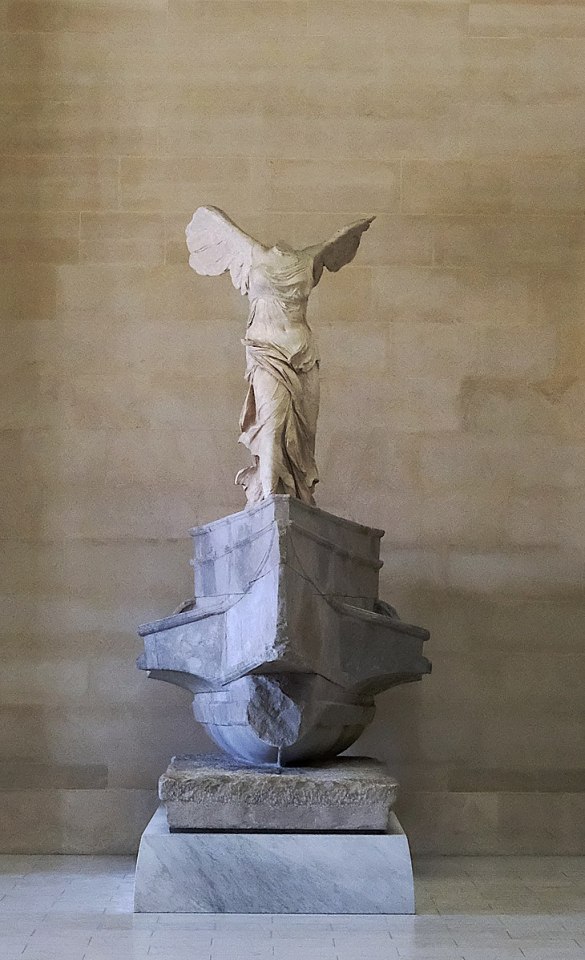
This is the sculpture the statues at the Temple of Mythal are based on - one Winged Victory of Samothrace.
She is a sculpture from the Hellenestic era, depicting the goddess Nike stood at the prow of a ship. Her head and both arms are missing, save one hand with two fingers (also in the Louvre but displayed separately). She was found on the Greek island of Samothrace, among the ruins of what was known as the Sanctuary of the Great Gods. It seemed like she was displayed at the top of a hill, looming down at all that regarded her.
I’ve had the absolute privilege of seeing her in person twice in my life, both before and after the 2013 restoration. And let me tell you, regardless of which staircase that leads you there, the sight of her will stop you in your tracks.
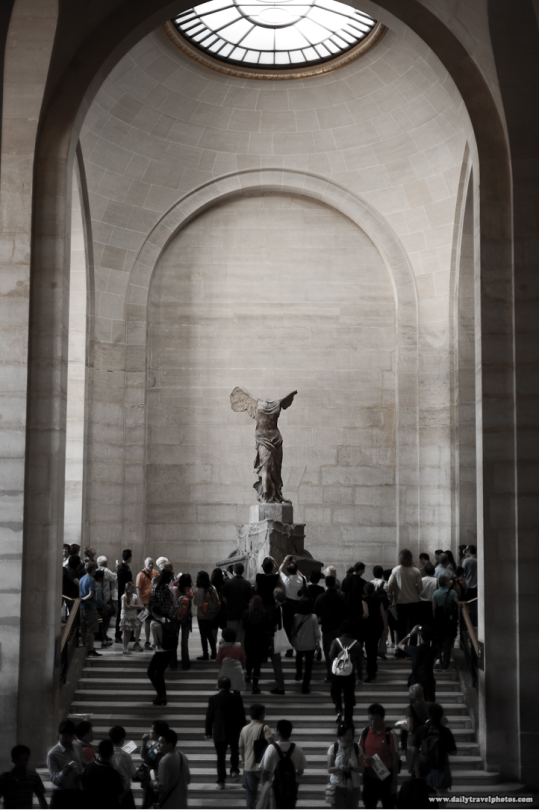
[Now with people, for scale.]
She is massive. Larger than life, and immediately is the centre of your attention. It's not the fact that she has no head, no arms. No, you will realise the closer you get to her, the more you're able to appreciate the details of this absolutely astounding piece of history.
No. It's because she feels so alive.
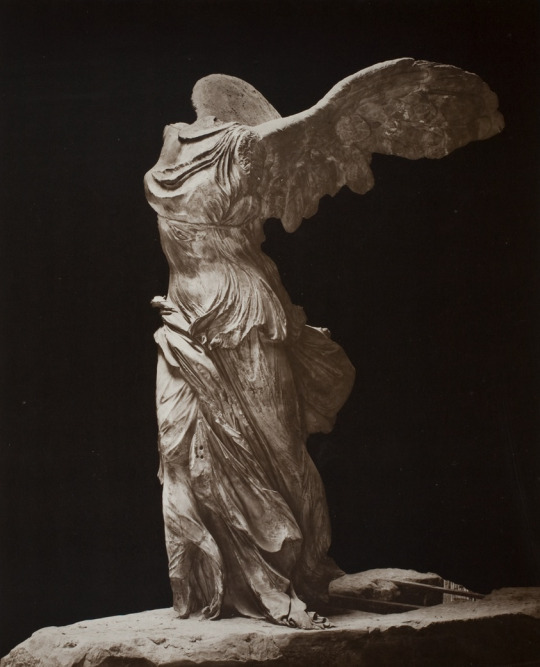
The way her robes drape against flesh, wet from sea-spray or rain, yet flowing with the motion of an invisible wind. The wings cast behind her dramatically as her right foot steps forward. Standing tall and proud, unflinching, unbowed against the elements. Even without her arms, you can feel how dynamic the torso and legs are.
You don't need to be an art historian, or even have any knowledge of Greek myth or art history to stand in front of her, as I once did as a young teen, and nearly be brought to tears.
So.
This brings me to the first of the two main gripes I have with the way this sculpture is used in Inquisition.
Compared to the way she's displayed in the Louvre, and also presumably how she was presented to her original audience - larger than life, looming, powerful, beautiful - she is relegated instead to smaller, repeating statues of the same nature throughout the temple.
This diminishes the purpose of the original sculpture, which was to instill a sense of awe and wonder. The singularity that forces you to focus and appreciate the scale and intricacy. The aura, the gravitas of having a single, massive sculpture of such a dynamic figure is completely gone.
And to make things worse, they Mythal-ify her. Adding a helmed head and changing her beautiful feathered wings to leathery dragon wings. They don't even add arms, which is odd because the original sculpture very clearly is missing its arms.
And, may I ask, Why?
It feels cheap, like they saw the Winged Victory and were like 'oh shit this is a cool sculpture, we should add it in game' without giving any fucking thought to what the sculpture means.
Which brings me to the second gripe. The complete disregard for the symbolism of the Winged Victory.
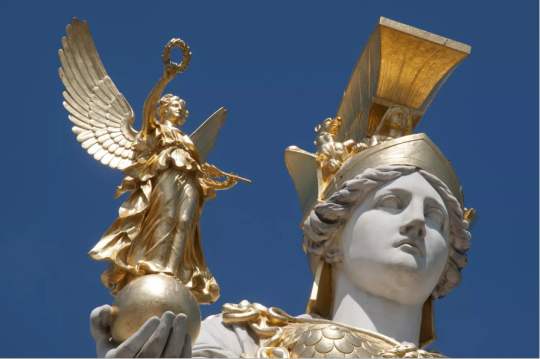
Detail from the Athena fountain, Parliament Building of Vienna, showing Nike the Winged Victory in the palm of Athena's hand [source]
Nike is a minor Greek deity, said to be the daughter of Pallas (a Titan) and the river Styx. Her other siblings by the same parents include Zelus (Zeal), Bia (Might) and Kratos (Strength).
Yes. That Kratos.
She was one of the earliest gods to pledge her allegiance to Zeus in the Titonomachy, and after the victory of the Olympians, Nike and the other gods that allied with them were allowed to live on Olympus. In her aspect as Victory, she is closely associated with several of the major Greek gods, and in particular, Athena.
There's also her Roman counterpart, Victoria. This version doesn't come with the backstory Nike has, but is more of a general concept of victory. This is the aspect that is present in a lot of the modern sculptures and interpretations of Nike/Victoria:
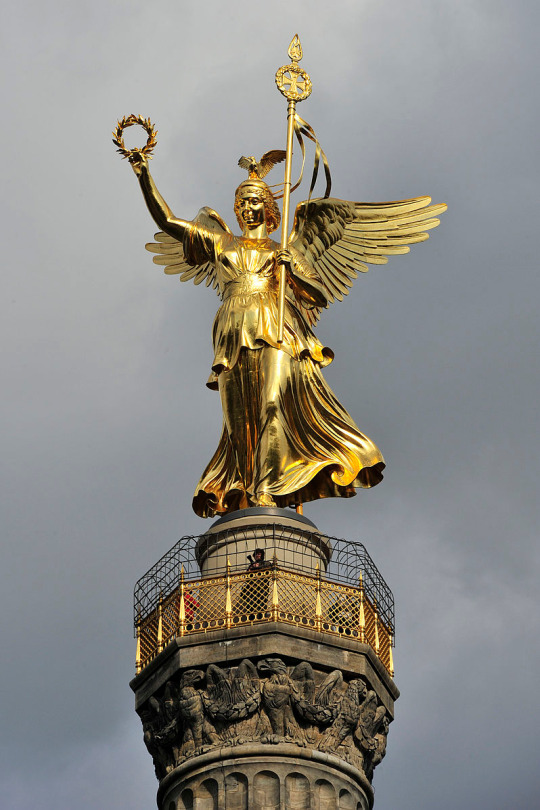
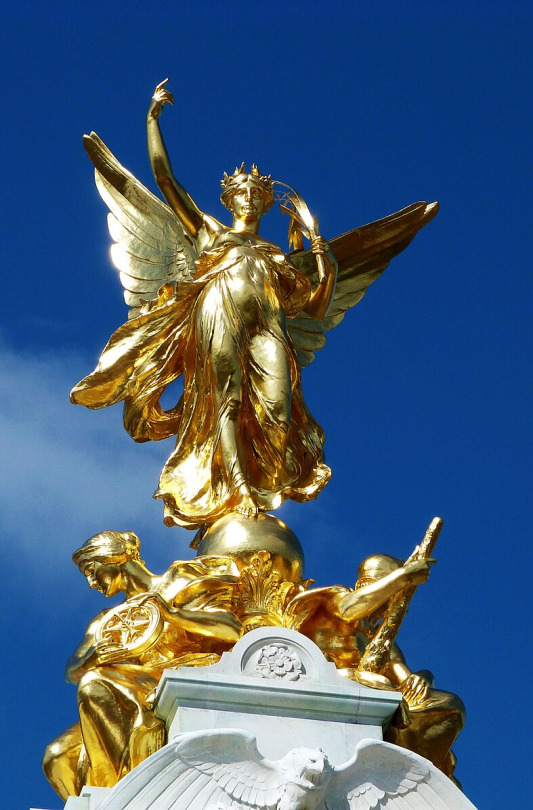
Left: Detail from the Berlin Victory Column. Right: Detail from the Victoria Memorial, London. Note the similar iconography, of a woman seemingly standing against a strong wind, fabric and cloth adhering and yet flowing against the breeze, wings outstretched.
From this, we can probably extrapolate what our beloved Winged Victory might've looked like. Here's an artist's render of one possibility:

There's some iconography we need to go through before moving on - symbols that are commonly associated with Nike/Victoria.
One is the trumpet as see in the reconstruction above, the sound and symbol of the end of war, of impending peace. Another is the laurel wreath, another Greek symbol of victory and achievement. Famously, laurel wreaths were used to crown victors of the original Olympic games.
This is another conversation entirely, but there’s a discussion to be had about the duality of Elgar’nan and Mythal, in term of vengeance and justice, and how an emotional rage versus a calculated wisdom can be compared to the difference between the two Greek gods of war – Ares and Athena.
If we can compare Mythal to Athena, in the sense of her wisdom in making difficult decisions, then it’s not a stretch to associate Mythal with the symbolism of Nike, and therefore explain the presence of statues similar to the Winged Victory in her temple.
But since Bioware absolutely did not put this in the game for anything other than the Aesthetic, there’s some problems that need to be addressed.
Mainly in the way in which these statues are scattered throughout the temple. If you wanted static, ominous statues to line the walls as your player characters explore, perhaps have like, I dunno. Less dynamic statues that you reference?
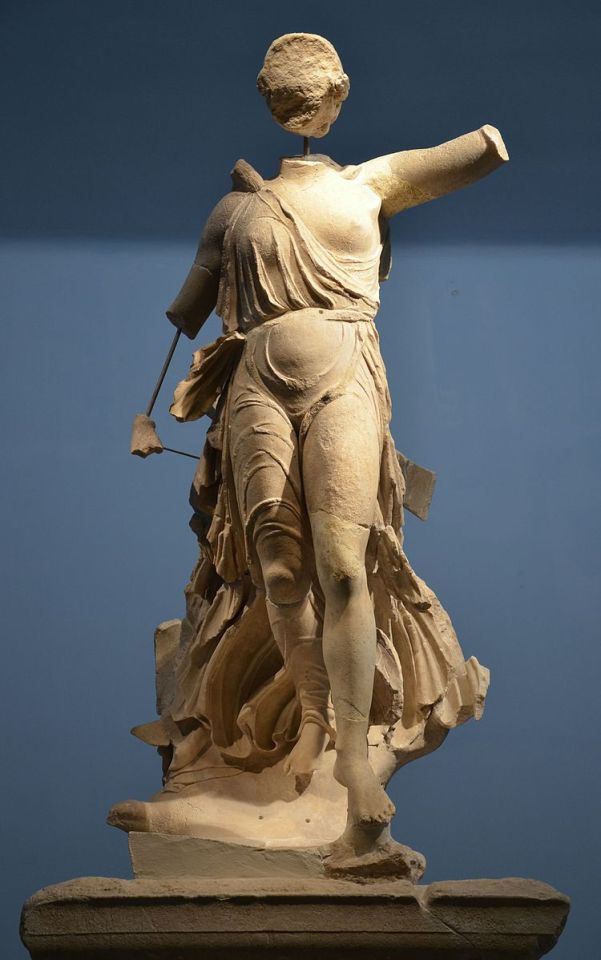
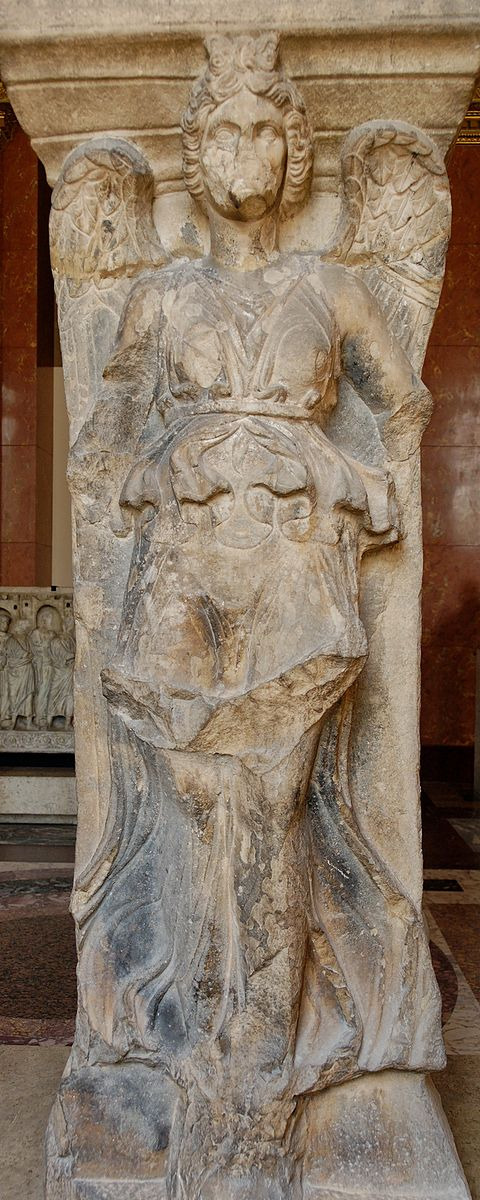
Left: Nike of Paionos, Right: Stele 1 of Las Incantadas
Or maybe instead of statues, have friezes lining the walls. Like this one from the equally iconic Pergamon altar, depicting the Giganomanchy.
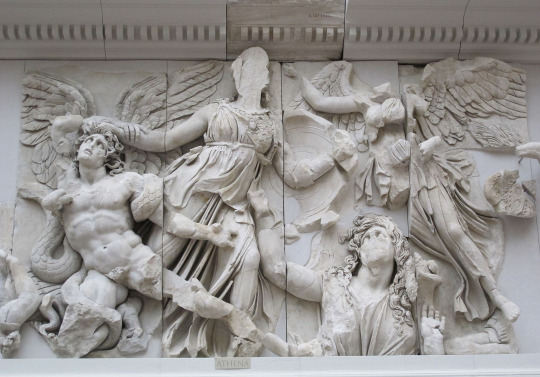
It’s the same symbolism, the wings, the smiting of foes and victory of good over evil.
And then perhaps, at the heart of the temple... where, y'know Bioware, lay a body of water sacred to Mythal herself, you could've perhaps done something remarkable. You could then have had the most dramatic and beautiful entrance you’d ever seen.

[Nike, at the iconic Daru Staircase, the Louvre]
It was at this moment that Mythal walked out of the sea of the earth's tears and onto the land. She placed her hand on Elgar'nan's brow, and at her touch he grew calm and knew that his anger had led him astray. - Codex entry: Mythal: The Great Protector
Mythal herself strides out of the Well Of Sorrows, the metaphorical tears of her followers that died and kept their knowledge alive in her name. Her (draconic) wings spread out, (restored) hands outstretched to touch her husband, to calm the rage that nearly destroyed this world.
A symbol of victory against the blind rage of a god against His father, the Sun. A symbol of wisdom and grace, against the violence of hatred. A divine sense of something bigger than anything we could imagine.
There's also the lack of iconography regarding victory, instead piling on some cheap representations of what we think of as Mythal. That's another post entirely on the symbolism of the Elven gods, but if Bioware really wanted to hone in on the Athena/Athena Nike parallels, they might have thrown in the trumpet/laurel/palm leaf symbolism with the statues, alongside the dragon wings.
If this were the case, then maybe, just maybe, Inquisition would’ve then earned the use of this sculpture in the game.
Sources not listed above/Further reading if you're interested
https://www.louvre.fr/en/explore/the-palace/a-stairway-to-victory
https://www.worldhistory.org/article/1412/winged-victory-the-nike-of-samothrace/https://smarthistory.org/nike-winged-victory-of-samothrace/
https://smarthistory.org/nike-winged-victory-of-samothrace/
https://www.khanacademy.org/humanities/ancient-art-civilizations/greek-art/hellenistic/a/nike-winged-victory-of-samothrace
#da lore#da meta#mythal#temple of mythal#dragon age#da lore and meta#yo this has been simmering and brewing in my brain for like 8 years now not kidding#and im already neck deep in like..... figuring out the evanuris and trying to tie them into real world mythology and thats super fun too!!!#watch as this consumes and destroys me#my writing
163 notes
·
View notes
Text
I think it would be funny if Leona had tried taking a nap in the dorm lounge for the first and only time and when he woke up he was surrounded by a circle of 20-30 other beastmen who decided to join him
#look he can't be the only beastman that sleeps alot#not super deep into the leona lore so hopefully there's not a vignette that flat out contradicts this#twst headcanons#leona kingscholar#twst#twisted wonderland
183 notes
·
View notes
Note
I want to play games with Amir but he takes it easy on me since I can't read the games as fast as him.

#awww that’s sweet anon <3 I get ya#though that now makes me wonder how are the arcade games inputs keeping up with Amir pressing stuff so fast?#although this is a different reality where it’s ran by Orokin so it’s not our Earth per say yknow?#while some stuff absolutely parodies IRL... I don’t think it’s yknow our IRL since it’s under one orokin government#so maybe arcade machines are built different in the Orokin ruled Earth#although he has super human speed because Volt batch so mmmm idk#I’m absolutely overthinking a detail that wasn’t meant to be overthought about as per usual#he would be cracked or just above average at fighting games given the inputs only get recurved so quickly through controllers#recieved so quickly*#wait... do y’all think Amir could mod games at the Hollvania mall using his powers and running it through the game’s hardware to alter it??#this just became a deep rabbit hole for Amir Beckett lore#do you think the Orokin found a way to eliminate controller input delay from video games xD#anyway Amir ultimate gamer canon and I can’t wait to get to know him better! 💜#mod rose#warframe confession#warframe#warframe 1999#amir beckett
17 notes
·
View notes
Text
Illithid Souls - Part 1
What’s up with mind flayers and souls anyway?
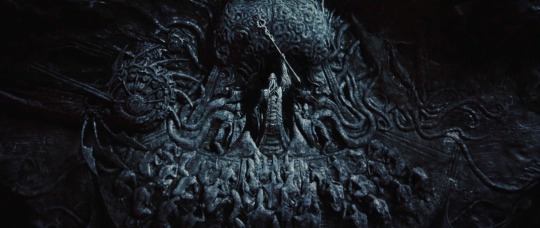
I know this deep dive has been done before like a hundred times, based on all the Reddit threads I’ve read, but I feel like a lot of the "evidence" has been scattered about in a lot of places (reddit, tumblr, other threads, other socials, etc). So I figured...why not gather a lot of it here in one place?
As with all my deep dives, this post is designed to equip you with some lore so you can build your own theories and ideas. I’ll offer theories that I find interesting or feasible, but lore is always a little hazy so I’m bound to be wrong or you’re bound to interpret things differently. Just have fun with the lore!
I’ll start by defining what D&D calls a soul, and then…well it unravels from there. In this part we're going to dive into the lore about souls, the afterlife, and where mind flayers differ, along with a bit of in-game context. In Part 2 we'll look at individual case studies (Tav/Durge, Orpheus, Karlach, and Gale).
Buckle up, folks, cause it's a long one!
As always, I’ll include images and image descriptors/text written out in case the pictures fail or are too small to read!
What is a soul?
The entire game of Baldur's Gate 3 is heavily invested in the idea of souls. Raphael wants to bargain with your soul. Mizora has Wyll's soul bound to a contract. Cazador plans to sacrifice 7007 souls. Vlaakith consumes the souls of her faithful. Karlach wants to collect (and use) soul coins. Every tadpoled follower of the Absolute is called a True Soul. This game is OBSESSED with souls.
But it never actually defines a soul, does it? So what do the official D&D rules say?
Well...they don't. Older editions used to split hairs about the difference between a soul and a spirit, but those older editions also used to say that elves, orcs, and half-orcs didn't have souls, so...we've moved on a bit from those days.
In the game, a book on soul coins defines souls as "the sum of personal and magical essence," which is both helpful and vague. The general player consensus is that a soul is the animating "force" that is made up of memories, personality, intelligence, and (possibly) morality, and that in some cases, such as the spell Speak with Dead, a soul differs from a spirit, which merely "animates" the body but does not actually possess the personality or the thinking capabilities of the deceased (though it may have access to memories).
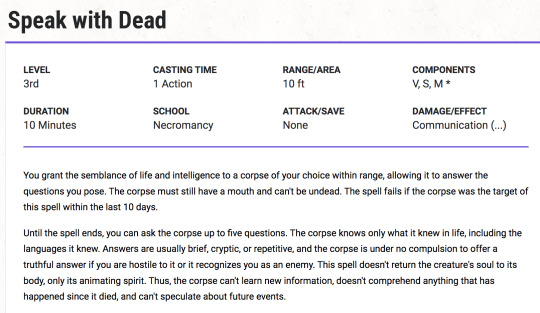
Speak with Dead [...] Until the spell ends, you can ask the corpse up to five questions. The corpse knows only what it knew in life, including the languages it knew. [...] This spell doesn't return the creature's soul to its body, only its animating spirit. Thus, the corpse can't learn new information, doesn't comprehend anything that has happened since it died, and can't speculate about future events.
So there's a chance that while an entire soul is generally made up of personality, memories, and some element of active thinking/decision making/speculation (intelligence, for lack of a better term), the part of a soul that functions as an "animating spirit" is what houses memory. In other words, animating spirit (memories) + personality + intelligence = soul.
This idea of the animating spirit (memories) being housed within a soul, but also detachable from a soul, is important for later, so remember this in a bit.
Souls also have power, which is why the game is obsessed with everyone fighting over souls. Raphael, Mizora, and Cazador trade in souls in exchange for power. There are insinuations in the game that the gods want to stop the "scourge of soulless illithids" (Mystra's words) because souls are a kind of currency to them (though, trust me, trying to find a recent D&D source that clearly states that particular stance is a damn migraine of an endeavor). But Withers does say that souls imbue gods with power, so the game at least operates with that assumption in mind.
According to Withers…
We all know that Withers, aka Jergal, aka the Final Scribe, aka the former god of death, aka the expert on souls, has plenty to say when you ask him to elaborate on anything:
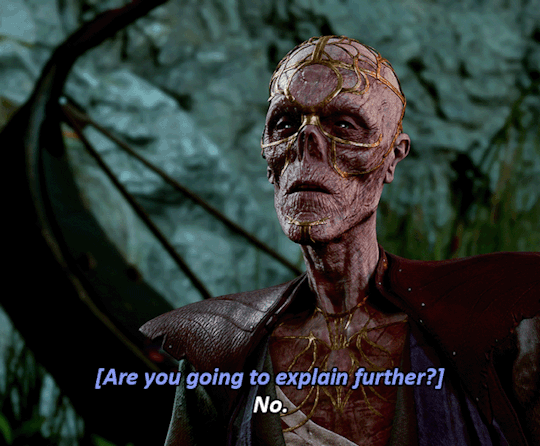
Well, okay, maybe he doesn't. But he does have a bit more to say about souls and mind flayers. For example, when he first brings up the topic of illithids and souls in Moonrise, this is some of the information he can give the player.

Withers: I shall ask yet again. Do illithids possess souls? Player: These abominations are soulless, surely. Withers: Correct. - Player: I'm not sure. Don't all living things? Withers: No. Nor canst thou count mind flayers among them. - Player: I admit I haven't thought about it. Withers: Thou shalt think about it now, and I shall give the answer. Mind flayers are soulless. Yet the Three amass an illithid army, void of apostolic souls that could imbue them with power.
A couple of things to note here. Jergal, the guy in charge of putting down the names of people who die and keeping track of where their souls go, is pretty clear that he thinks mind flayers don't have souls. But his last statement clarifies two things: one, that he is referring specifically to apostolic souls (more on that in a bit) and that souls imbue gods with power.
Souls give the gods a kind of strength. He brings this up when he criticizes the dumb plot the Dead Three came up with in his post-epilogue scene:
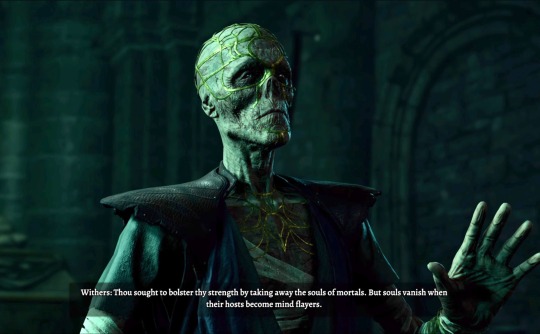
Thou sought to bolster thy strength by taking away the souls of mortals. But souls vanish when their hosts become mind flayers.
So we know that souls are a source of power for deities and gods because they imbue gods with power and strength. But gods only get the power of these souls after a mortal dies with their soul intact. If someone becomes a mind flayer...well, let's just say the natural order of things gets disrupted.
What happens when you die?
You see, normally, when someone dies in Faerûn (assuming they are humanoid), their soul travels to the Fugue Plane where it basically waits around until a deity picks them up or Kelemvor decides they're just going to be part of the Wall of the Faithless for forever. From the Sword Coast Adventurer's Guide (page 20 because I am, as youtuber Swoop says in her docs, a thorough bitch):
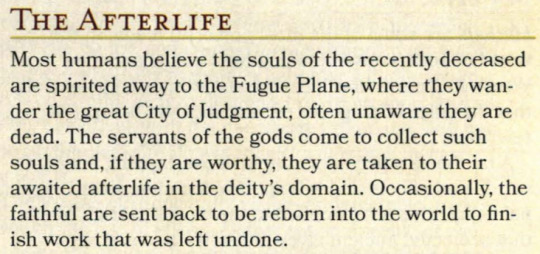
The Afterlife Most humans believe the souls of the recently deceased are spirited away to the Fugue Plane, where they wander the great City of Judgment, often unaware they are dead. The servants of the gods come to collect such souls and, if they are worthy, they are taken to their awaited afterlife in the deity's domain. Occasionally, the faithful are sent back to be reborn into the world to finish work that was left undone.
This is where the idea of apostolic souls comes in. Apostolic, in its most basic definition, means "having the characteristics of an apostle," or having the characteristics of someone who dedicates their entire lives to the teaching of a particular religious figure (in our context and reality, this mostly means the apostles of Christ, but in BG3 it would refer to any deity). I think here, the definition gets stretched a little thinner to mean any soul that is capable of devotion to a deity, rather than a soul that is already devoted. Apostolic souls can be Faithful, Faithless, or False (which is how souls are separated in the Fugue Plane).
In other words, an apostolic soul is a humanoid-specific soul that the deities recognize and can use as a source of power by inviting said soul into their domain. Mind flayers do not have apostolic souls. Emphasis on apostolic here, but we'll back to mind flayers in a minute. For now, let's look at the Faithless and False souls.
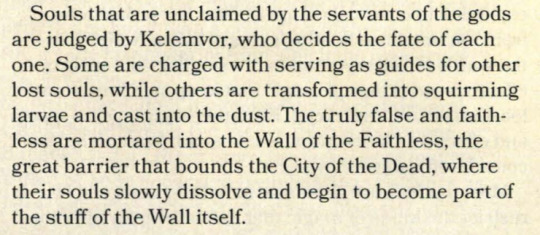
Souls that are unclaimed by the servants of the gods are judged by Kelemvor, who decides the fate of each one. Some are charged with serving as guides for other lost souls, while others are transformed into squirming larvae and cast into the dust. The truly false and faithless are mortared into the Wall of the Faithless, the great barrier that bounds the City of the Dead, where their souls slowly dissolve and begin to become part of the stuff of the Wall itself.
Depressing.
The distinction between a Faithless and a False soul is a little hazy, but according to the Forgotten Realms wiki, a Faithless soul is someone who never aligned themselves to the worship of a specific deity or who just didn't believe in the existence of the gods at all (think of Astarion, who outright rejects all gods). A False soul, in contrast, is someone who did believe but failed to serve their god or outright betrayed them (a fate that Gale feels he is faced with for being on Mystra's bad side). Allegedly all the Faithless end up becoming part of the Wall, whereas the False could get mitigated sentences, such as becoming guides for other souls.
Of course, there's nothing stopping deities from combing through Faithless or False souls to collect them into their domains. But it could take a while. Clearly, the more souls a god collects into their domains, the more powerful they become, but the gods are also not exactly fighting over the souls of Faithless or False people, because people can end up waiting hundreds of years before Kelemvor is finally like "guess you're part of the wall now." Your only option to get out of that is to sell your soul to a devil, which isn't a much better fate.
From The Sword Coast Adventurer's Guide, page 25, regarding servants of Asmodeus:
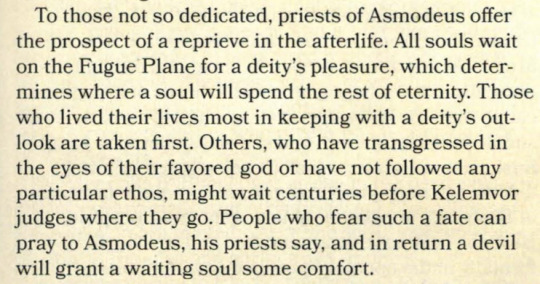
To those not so dedicated, priests of Asmodeus offer the prospect of a reprieve in the afterlife. All souls wait on the Fugue Plane for a deity's pleasure, which determines where a soul will spend the rest of eternity. Those who lived their lives most in keeping with a deity's outlook are taken first. Others, who have transgressed in the eyes of their favored god or have not followed any particular ethos, might wait centuries before Kelemvor judges where they go. People who fear such a fate can pray to Asmodeus, his priests say, and in return a devil will grant a waiting soul some comfort.
This makes me infer two things: first, that the gods are kind of picky about which souls they want to join their domain (regardless of what actually happens to that soul in a deity's domain, which is a topic for a different post entirely, because the results may vary) and therefore the gods aren't just going to go with any soul that ends up in the Fugue Plane. Second, that the gods aren't exactly in a hurry to choose among wandering souls, likely because the Material Plane just keeps producing and destroying mortals, resulting in a constant flow of souls.
We see a glimpse of a god's perspective on the influx of souls when Gale confronts Mystra in the Stormshore Tabernacle (in this case, when you play him as an Origin):

Gale: You're one to talk. How many innocents were you prepared to sacrifice if I detonated the orb? Mystra: Such eddies are unexpectional. Souls arrive and depart your plane with every tide, in circumstances just and unjust. The Weave cannot be lost because we are unwilling to cause a ripple. And that is what is at stake.
She then goes on to say "With each day that passes, the elder brain threatens to become a new kind of god, its worshippers a scourge of soulless illithids." This is what's at stake. The loss of souls on the Material Plane.
The Absolute plot threatens that cycle of birth and death, of souls arriving and departing. But how, exactly, is the mind flayer plot a threat?
Well, for one, if everyone with a tadpole turns into an illithid (which doesn't have an apostolic soul, Withers is adamant about this), and then all the illithids kill all the non-illithids...who is making new babies with apostolic souls? And if there are no new fresh souls, eventually the deities will just also die out, since no one will be left to believe in them and thus their powers will diminish and eventually fade. It might take a few hundred years, but it still spells death for everyone involved.
The irony here is that it means the Dead Three gambled and lost even if their plan to ascend a Netherbrain ends with a success, such as when Tav or Durge decides to dominate the world by controlling the Netherbrain. Either the brain is destroyed and they lose, or the Netherbrain successfully completes its Grand Design and they really lose, because the only winner here after a thousand years would be the Netherbrain. Thus we have Withers taunting them in the post-epilogue scene by asking if they really thought their ploy would succeed.
Okay...so we know that mind flayers killing everyone on the planet is a bad idea because it means that apostolic souls stop arriving in the Fugue Plane. But what about mind flayers? If they don't have apostolic souls, do they have ANY soul worth eternal currency?
Remember, the only way to create more mind flayers is to tadpole a humanoid creature. Without humanoids, mind flayers can't reproduce. But when humanoids turn into mind flayers, they allegedly lose their souls. Right?
Withers says souls "vanish" when the body turns into a mind flayer. But this is vague, and thus allows for a few different theories. Perhaps souls move on to the Fugue Plane while the person-turned-mind-flayer continues existing on the Material Plane. Perhaps the soul just becomes obscured and unrecognizable by the gods. Or perhaps the soul really does go poof and is replaced by something else entirely.
So which is it? Well...first of all, let's set the record straight on mind flayer souls.
Do mind flayers have souls?
The short answer is...yes. They just don't have apostolic souls.
According to Volo's Guide to Monsters (page 80 for those looking through their copies at home):
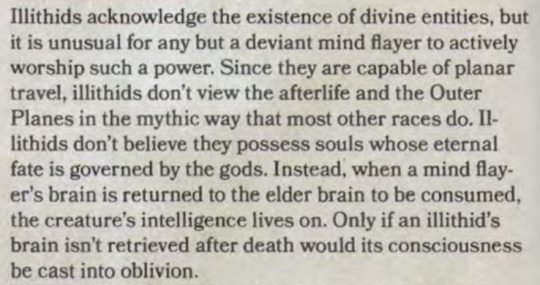
Illithids acknowledge the existence of divine entities, but it is unusual for any but a deviant mind flayer to actively worship such a power. Since they are capable of planar travel, illithids don't view the afterlife and the Outer Planes in the mythic way that most other races do. Illithids don't believe they possess souls whose eternal fate is governed by the gods. Instead, when a mind flayer's brain is returned to the elder brain to be consumed, the creature's intelligence lives on. Only if an illithid's brain isn't retrieved after death would its consciousness be cast into oblivion.
And on page 72:
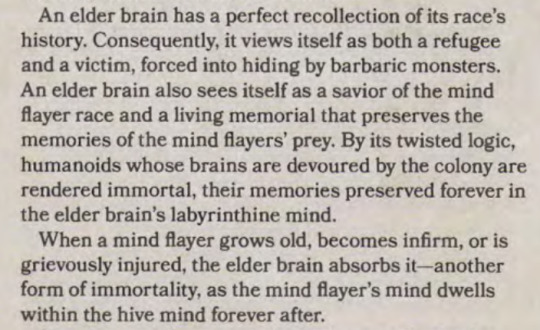
An elder brain has a perfect recollection of its race's history. Consequently, it views itself as both a refugee and a victim, forced into hiding by barbaric monsters. An elder brain also sees itself as a savior of the mind flayer race and a living memorial that preserves the memories of the mind flayers' prey. By its twisted logic, humanoids whose brains are devoured by the colony are rendered immortal, their memories preserved forever in the elder brain's labyrinthine mind. When a mind flayer grows old, becomes infirm, or is previously injured, the elder brain absorbs it—another form of immortality, as the mind flayer's mind dwells within the hive mind forever after.
So essentially, mind flayers do have a soul, but because they are a) not humanoid but are aberrations from another plane, and b) not faithful to the deities of Faerûn, their souls are not recognized by the gods. The souls might not even journey to the Fugue Plane when they die. Instead, mind flayers give up their consciousness (their memories, especially) to an elder brain to become part of its eternal collective memory.
It's worth noting that Volo's Guide to Monsters puts emphasis on memory and intelligence here, but not necessarily personality. Mind flayers and elder brains do have a kind of personality, because they experience emotions (we'll look at some conversations with the Emperor in Part 2), but their emotional range seems to be a little limited. For example, regarding elder brains:

An elder brain is arrogant, scheming, and power hungry, yet quick to flee or beg for mercy in the face of a powerful foe. It has no conception of joy, sympathy, or charity, but is well acquainted with fear, anger, and curiosity. It is an intellect utterly incapable of empathy or concern for creatures other than itself.
These limited emotions suggest there might be some element of personality here, but it's not exactly the same as a humanoid personality, which would normally be capable of a wider scope of emotional range. We'll talk a lot more about personality and how transforming into a mind flayer alters that part of one's identity (if not their actual soul) more in Part 2, but for now, just know that a mind flayer technically has all the elements usually present in a soul: an animating spirit (memories), intelligence, and personality (emotion).
When mind flayers die, their memories and intelligence are usually consumed by an elder brain, but it's unclear if the personality is too, or if the personality is destroyed. However, if they're not enthralled to an elder brain or if they die and their brain isn't retrieved to give to an elder brain...then their soul is "cast into oblivion."
Being cast into oblivion could mean anything. It could mean that their soul simply wanders around wherever it died, untethered to anything but unable to move on. Or it could mean that their soul simply ceases to exist. No one really knows what happens to it because renegade mind flayers are extremely rare. BG3 has Omeluum and the Emperor, but other than those two, official D&D lore only lists a small handful of other renegades out of millions of mind flayers over time.
So now you're probably thinking, "Well, wait, but is a mind flayer's soul the same soul that a person had before they became a mind flayer?" And the answer to that is complicated.
Let's talk about ceremorphosis
Normally a mind flayer isn't supposed to remember much of its life prior to ceremorphosis. This is partly why mind flayers eat brains, so they can literally absorb the memories of other creatures and make those memories part of the hive mind. But initially, after ceremorphosis, it seems like the the usual animating spirit (memories) of a person gets destroyed or displaced.
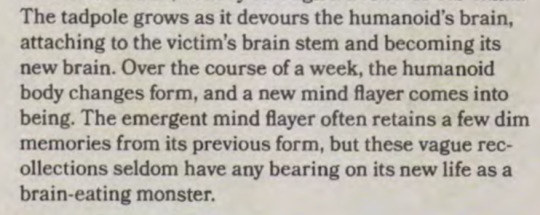
The tadpole grows as it devours the humanoid's brain, attaching to the victim's brain stem and becoming its new brain. Over the course of a week, the humanoid body changes form, and a new mind flayer comes into being. The emergent mind flayer often retains a few dim memories from its previous form, but these vague recollections seldom have any bearing on its new life as a brain-eating monster.
So right off the bat, a typical mind flayer loses the memories (perhaps the animating spirit) of the original host, and it's likely that it loses a lot of the initial personality as well (since it seems likely to lose some of the emotional range). Its intelligence is likely altered too, since the tadpole is literally eating brain matter. So this could lead us to believe two things.
First, that ceremorphosis utterly destroys the host's body and the host's soul likely goes to the Fugue Plane because they have basically died. Their brain has been consumed and their body transformed, so in essence they can't be themselves anymore. Instead, a new soul has taken residence inside the mind flayer body, though where this soul comes from is unclear since tadpoles probably don't have souls. The original soul, however, is free to move to the Fugue Plane and beyond.
Or, alternatively, the host's soul is transformed, shedding memories and personality to become a non-apostolic soul that aligns with an elder brain's hive mind somehow. This means that the host's apostolic soul might be destroyed because it's been changed so drastically, but there are some parts of the original soul still left (the lingering memories, for example). This means the host's original soul didn't move on, but is tethered to the mind flayer body and has been changed into something unrecognizable. When the mind flayer dies, the former apostolic-soul-turned-illithid-soul is either consumed by an elder brain or cast into oblivion.
If the first theory is correct, it seems a little odd that the BG3 companions are so concerned about losing their own souls. If it would just be the same as dying, there would still be some desire to avoid the fate of ceremorphosis, but the companions seem incredibly concerned about losing their own autonomy, as if their consciousness will be trapped inside a mind flayer body and their souls forfeit and unable to move on to the Fugue Plane. After all, Withers is in the business of plucking souls out of the Fugue Plane when we inevitably die in the game.
Specifically, Withers can take a body that has been completely turned to ash and resurrect it with True Resurrection, a spell powerful enough to completely restore a body to its former state. However, there is some assumption here that he wouldn't be able to do this with a mind flayer body, thus the push in the game for a cure.
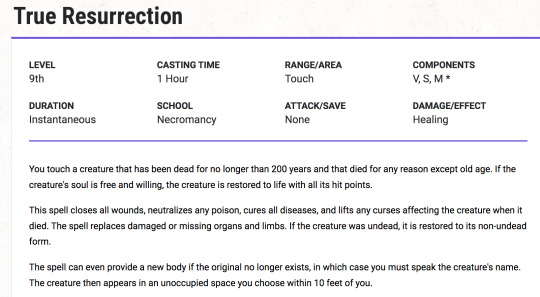
True Resurrection You touch a creature that has been dead for no longer than 200 years and that died for any reason except old age. If the creature's soul is free and willing, the creature is restored to life with all its hit points. This spell closes all wounds, neutralizes any poison, cures all diseases, and lifts any curses affecting the creature when it died. The spell replaces damaged or missing organs and limbs. If the creature was undead, it is restored to its non-undead form. The spell can even provide a new body if the original no longer exists, in which case you must speak the creature's name. The creature then appears in an unoccupied space you choose within 10 feet of you.
In other words, if theory one is correct, and a person simply dies when they become a mind flayer, Withers should technically be able to resurrect them by pulling their soul out of the Fugue Plane and giving them a new body. You'd have a weird mind flayer clone of you running around, but you wouldn't have to worry about ceremorphosis again.
(But then again, we know the game ignores the organ-regrowing properties of True Resurrection for Karlach, too, so the game intentionally limits the capabilities of True Resurrection.)
If theory two is correct, and the lore is extremely unclear about this process if this is the case, then the companions' reactions and dialogues make a bit more sense. They all talk as though turning into a mind flayer means their soul is somehow destroyed. Mind flayers having souls is likely not common knowledge in the universe (certainly no one in the game is arguing that they have souls), so if a person's soul is transformed beyond recognition it could certainly seem like the host's soul got destroyed. Additionally, this would result in a person's consciousness being trapped inside a mind flayer body, so the loss of autonomy would be a terrifying possibility here.
Plus, we know that when a mind flayer dies, the soul they have (whether a brand new soul or an apostolic soul that has been altered) is consumed or thrown into oblivion. So if theory two is correct, there will be no eternal consciousness for you, allegedly (though there's some debate as to how much eternal consciousness you have in the Fugue Plane or the Outer Planes too...)
We don't know which of these theories is correct, and the game sort of slides between these two theories (as we'll see in Part 2). But, and I cannot stress this enough, this lore only applies to normal mind flayers.
BG3 has altered the usual mind flayer tadpoles with Netherese magic such that things get a little wonky. And beyond that, the ultimate tadpole that changes you (or Karlach, or Orpheus) into a mind flayer capable of wielding the Netherstones is a Supreme Tadpole that has been further altered by the Emperor:
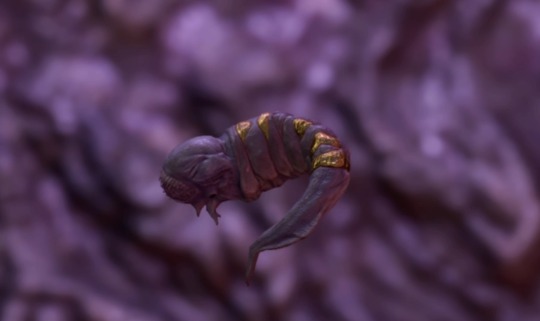

The Emperor: I took this one from the nautiloid. I have been nurturing it ever since - priming it for your use. It is not dissimilar to the experience you already had with the previous one. Only this one is much more potent. All you have to do is open your mind to it. Its latent potential will do the rest.
We don't know how the Emperor has been priming this tadpole, but if it came from the nautiloid, then it is imbued with the same Netherese magic as all the other tadpoles. It's not the same as the Astral-touched tadpole (from Act 2), which has been in the Astral Prism for millennia, but it is somehow more powerful, or at least more effective in transforming you into a new kind of mind flayer, one that can think independently of the elder brain.
So now you (or Orpheus, or Karlach) are a new special kind of mind flayer. Does that change anything?
Yes. In fact, it seems to change quite a lot. But this post is already super long, so you'll have to check out Part 2 to see what I mean.
~*~*~
You made it to the end! Gold stars!!!
✨⭐️🌟⭐️✨
I'll link part 2 soon~
Tagging those who wanted an update! @galesdevoteewife @stuffforthestash
#bg3#baldur's gate 3#mind flayer#the emperor#bg3 lore#bg3 meta#bg3 deep dive#deep dive#long post#super long post#yall the days I put into this#who let me do this to myself
88 notes
·
View notes
Text
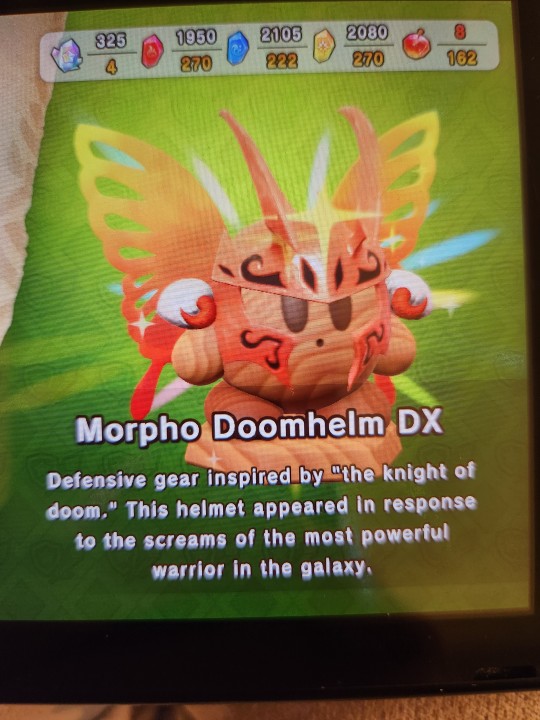
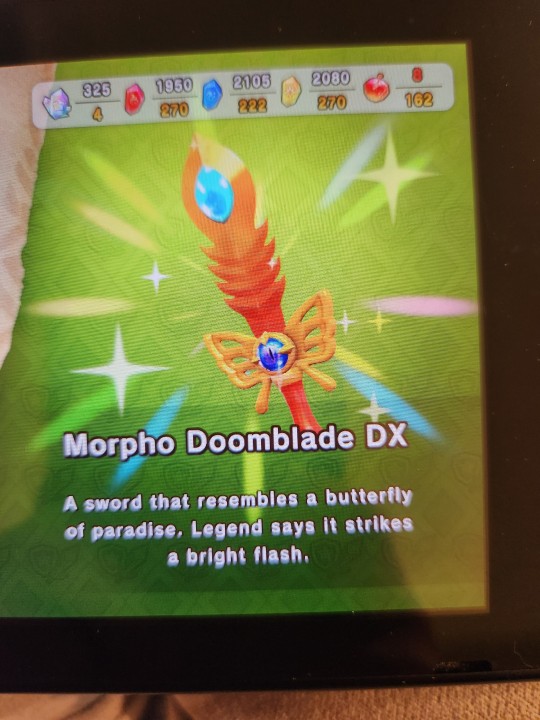
"This helmet appeared in response to the screams of the most powerful warrior in the galaxy." -Morpho Doomhelm description
So when you listen to aeon hero light/dark theme, you hear a scream/battle cry at the start of the battle. This means you are hearing galacta knight's voice! And he is angry!
#galacta knight#morpho knight#super kirby clash#kirby#my post#amd when combine the crazy text that hyness says in star allies and his description as well#oooooh boi#we got some more lore to deep dive in#he is not a happy camper#hyness#sara talks
50 notes
·
View notes